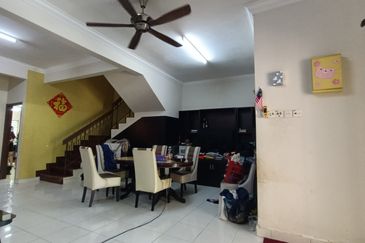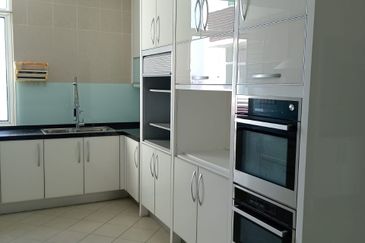
- Taking vacant possession of a home is a momentous occasion. Homebuyers, aware of their rights, are increasingly seeking the services of building inspectors to help identify quality issues during the handing-over process.
So, you can’t wait to take vacant possession of your new home. If this is your first home purchase and your investment has been greatly influenced by the developer’s elaborately dressed show unit, brace yourself for the stark reality of owning a bare unit.
That aside, what construction quality are you expecting? What standard of finishing would be acceptable to you? Since quality is a highly subjective matter, how does one even benchmark quality?
This is a tough question with no straightforward answers. Except for the non-negotiable safety aspect of a building, opinions on what constitutes a quality built home can run the gamut.
A luxurious home is expected to be the epitome of quality in all aspects, structurally and down to the finishing, although the latter is not necessarily the case. On the flip side, I have seen affordably priced homes with built standards on a par with homes that cost at least twice.
Taking vacant possession of a home is a momentous occasion. Homebuyers, aware of their rights, are increasingly seeking the services of building inspectors to help identify quality issues during the handing-over process.
For first-time homebuyers, building inspectors are a godsend, as many are unsure of what to do or what to accept or reject.
Reports from building inspectors — who can charge as little as RM300 for their services — have stirred a hornet’s nest. Armed with these reports, dissatisfied buyers are turning to the Tribunal for Homebuyers Claims to file complaints against developers for failing to rectify defects. It is unclear what the exact number of outstanding cases before the tribunal is, but sources familiar with the matter suggest it runs into the thousands and is growing rapidly.
The tribunal is a popular recourse for aggrieved home buyers, as the procedure involved is simple, and does not incur large costs nor involve the appointment of lawyers.
Meanwhile, industry experts familiar with the building inspectors’ reports say these are based primarily on inspection tools outlined in the Construction Industry Development Board’s (CIDB) Quality Assessment System in Construction (QLASSIC). Basically, this is a system or method to measure and evaluate the construction workmanship quality of a building based on the Construction Industry Standard (CIS 7:2006). In short, QLASSIC sets the quality benchmarks within the construction industry in Malaysia.
The QLASSIC assessment on a project is conducted upon its completion but before the certificate of vacant possession is issued. The marks given during the site inspections are combined according to the assigned weightages to calculate an overall QLASSIC score that represents the quality level achieved in the entire project.
It is important to note that the assessment process is based on a random selection of a percentage of units in a project, and NOT the entire project.
The question here, therefore, is whether it is appropriate or fair to adopt the QLASSIC assessment in its existing form for individual homes.
Is the market prepared to pay for the adoption of QLASSIC standards in every home? And before that, are the QLASSIC standards designed for this purpose?
CIDB withdraws quality guidebook for homeowners
In 2014, CIDB published a Quality Guidebook for Homeowners to create awareness of the quality of work in construction as well as to promote the adoption of QLASSIC in projects.
Just recently, on Nov 14, CIDB announced that it was retracting the guidebook with immediate effect. The reason: The guidebook had been misinterpreted as a defect specification, leading to widespread confusion. Thus, CIDB also said, existing copies or citations from the guidebook were rendered unusable and void.
QLASSIC assessments, CIDB further explained, are not meant to be used for individual units of housing. Rather, they are used to arrive at an overall quality rating for the workmanship of a particular housing development, and this is done through quality assessment conducted by random sampling.
CIDB’s decision has come on the heels of a protracted engagement process with developers and contractors that are now bearing the brunt of building surveyors’ QLASSIC-guided reports.
What now for buyers?
With CIDB’s clarified stance on the function and intention of QLASSIC assessments, what options do buyers have regarding quality concerns?
We all know that there are rogue developers; but, then again, not all buyers are angels either. Arguably, many complaints of quality could be skin-deep aesthetic issues that could have stemmed from the way homes in Malaysia are built. The reality is that the quality of construction is highly subjective and difficult to measure.
Without a clear definition of home construction quality, the tussle between industry stakeholders and buyers will persist, and remain unresolved.
Interestingly, irked by the building inspectors’ reports, Sime Darby Property Bhd (SDP) (KLSE:SIMEPROP) has taken the lead in introducing its own quality standard manual. It provides what SDP says is clear and comprehensive information about the standard of finishes of its products. In short, the manual serves as a guide for SDP’s customers on the expectations of the level of quality in the homes they are buying.
This is SDP’s solution to managing customer expectations regarding product quality and tolerances, particularly finishes, in response to the confusion stemming from building inspectors’ reports.
Notably, the manual has been crafted based on CIDB’s Construction Industry Standard. Its outlined standards have received endorsement from the Ministry of Housing and Local Government and are incorporated into the sales and purchase (S&P) agreements. According to SDP, the manual is explained to buyers both before they book a product and again before signing the S&P agreement.
SDP must be applauded for addressing the quality issue proactively, rather than waiting until the issuance of vacant possession. As the manual was recently introduced, it remains to be seen whether it will achieve its intended purpose.
Now that CIDB has withdrawn its guidebook, it will be interesting to see whether SDP will follow suit or, perhaps, update it with a revised version.
Ministry of Housing and Local Government must act urgently
Doubtless, the confusion and discord over what constitutes a quality home stem from the lack of a formal definition of quality.
What Malaysia urgently needs, therefore, is a clear set of minimum good practices on quality construction for all homes. The onus is on the Ministry of Housing and Local Government to fill this gap.
The narrative of good practices should be comprehensive. For instance, the current practice of employing descriptions such as “use of quality sanitary fittings” or “quality paint” in S&P agreements is vague and open to interpretation and dispute.
Given the way homes are built in Malaysia, certain tolerances in construction quality are unavoidable and must be clearly outlined in the guidelines. Questions about what constitutes a defect, for example, and which “defects” are acceptable should be explicitly addressed. Of course, safety must never be compromised in any building.
Some have suggested offering buyers the option to purchase bare units, minus fit-outs, to avoid disputes over finishing quality.
While this practice is common in some countries, I doubt it would be readily accepted locally. For one, the process of fit-out is tedious, time-consuming and even costly. More significantly, banks may or may not factor this expenditure into the mortgage.
There is no avoiding the issue. Without clear standards on construction, confusion over quality issues will not only persist but hinder the growth of Malaysia’s building and construction industry. That’s the Real Deal!
Developers can, of course, choose to go above and beyond the guidelines, and those who do deserve praise and will set themselves apart from the competition.
Au Foong Yee ([email protected]) is an editor emeritus at The Edge
Looking to buy a home? Sign up for EdgeProp START and get exclusive rewards and vouchers for ANY home purchase in Malaysia (primary or subsale)!
TOP PICKS BY EDGEPROP

NZX Commercial Centre
Petaling Jaya, Selangor

2 Storey Link House, Bandar Puteri Puchong, Puteri 12
Bandar Puteri Puchong, Selangor

Taman Perindustrian Bukit Serdang
Seri Kembangan, Selangor

9 acres Durian Farm Pahang Raub, Jalan Sungai Chalit, Kampung Sungai Klau Agricultural Land
Raub, Pahang

Taman Perindustrian Putra Puchong
Puchong, Selangor

Teega Residences, Puteri Harbour
Kota Iskandar, Johor



















